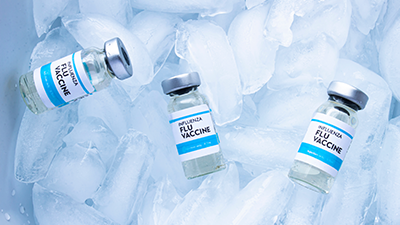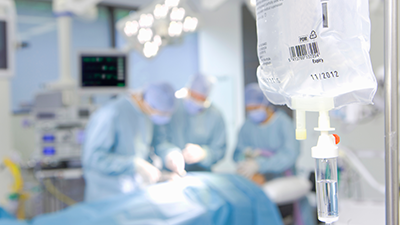Life sciences
Optics at the service of the life sciences industry

The constant search for new treatments, diagnostic methods and safe, effective pharmaceuticals represents a major challenge for research centres, as well as biotech and pharma companies.
Ensuring the integrity and sterility of biological product containers for patient safety is also a crucial responsibility of this industry. Optical technologies play a vital role in the life sciences in a wide range of scientific instruments, for imaging, analysis and diagnostic applications. Whether in fundamental research, biotechnology, molecular biology or biomanufacturing processes, sensors, cameras and lasers are widely used to ensure accurate measurements of biological systems.
Your challenges

Shortage of photonic optics experts

High-throughput screening

Weak signal detection

Reduced production costs

Product quality and integrity control
Defects, sterility, labelling, counterfeiting, contaminants, packaging, etc.
Advanced image analysis
Segmentation, classification, identification of regions of interest, fusion, etc.
Optical design, analysis and modelling
Main Applications

UV Disinfection
UV disinfection faces challenges such as effective surface coverage, appropriate UV exposure and user safety. Optics play a crucial role in supplying advanced technologies such as specific UV light sources and optical irradiation devices, enabling effective surface disinfection in a variety of environments, thus contributing to infection prevention and health safety.
Discover how to choose the right partner to develop your UV solution in the infographic 8 essential experts you need to develop your UV solution.

Cold Chain Control
Cold chain control in the life sciences presents challenges such as continuously monitoring temperatures, preventing variations and ensuring sample integrity. Optics play a key role in providing advanced technologies such as optical temperature sensors and optical tracking devices, enabling precise, real-time monitoring of storage conditions, guaranteeing the quality and stability of products in the life sciences field.
To learn more, read the blog article: Controlling the cold chain: More accessible and less expensive than ever.

Development of Illumination and Detection Modules for Advanced Microscopy
Developing illumination sources for life science instruments requires detailed knowledge of the applications, samples and phenomena to be observed. Whether your illumination is based on a light-emitting diode or a laser, the performance to be met can pose challenges in terms of uniformity, dosage, spatial coverage, stability, beam quality, spectral coverage, multiplexing or temporal precision. INO has developed several low- and high-power illumination sources with varied spectral properties to meet the needs of these customers, drawing on expertise in modelling, optical design, optoelectronics, optomechanics, metrology and laser development.

Quality control
Ensuring that pharmaceutical or medical products are suitable and meet quality thresholds, but also that quality is maintained throughout their shelf life, is of great importance to patient safety. For example, the medical and pharmaceutical industries have to comply with demanding and rigorous standards (e.g., FDA, EU GMP, ISO 11697, Medical Device Regulation [MDR]). Although they are highly efficient and effective for many applications, standard machine vision inspections have limitations that lead to inspection challenges not currently addressed by commercial solutions. This is particularly true when it comes to detecting defects through packaging (even opaque) or inside structures such as missing or defective components, cracks, holes, bubbles, humidity, etc.
To learn more, read the blog article: Seven non-destructive inspection technologies for the manufacturing industry.
Our customer testimonials
See what INO customers have to say about our services and solutions.
Our solutions
Custom-made solutions

To find out if we can help you and meet your needs
Do you have a question? Do you wonder how we can help you?







